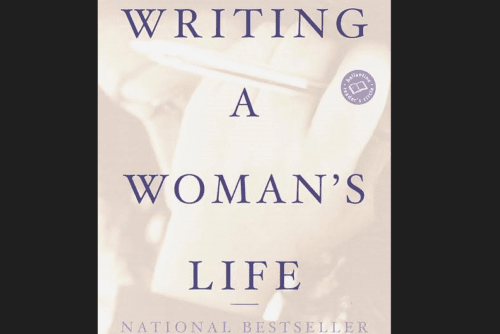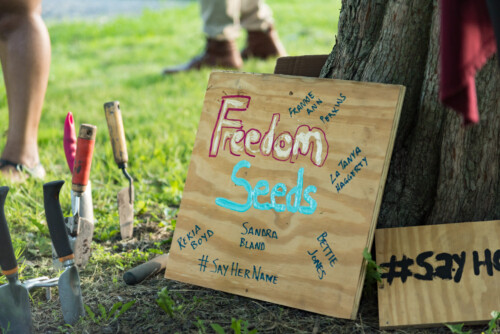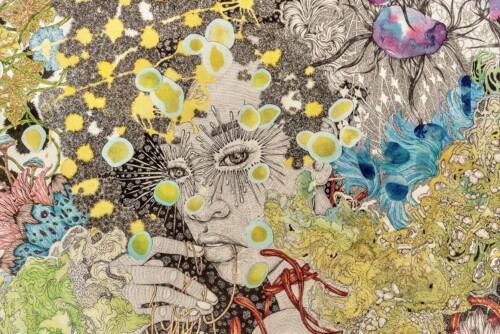Enhancing the Lives of LGBTQ Older Adults in the Twenty-First Century
Who are gay, lesbian, bisexual, transgender, and questioning elders? And why does it matter? The questions of people who make up the aging demographic in this country, and who will define the contours, identities, and needs of elders in the twenty-first century, are still traditionally represented as heterosexual whites or people of color, commonly coupled so as to represent our own grandmothers and grandfathers. They are always assumed to be heterosexual. But, as a favorite chant in modern gay pride marches goes these days, “Two, four, six, eight—How do you know your grandmother’s (or grandfather’s) straight?” The chant itself compels us to ask a more complicated set of questions. Exactly who are elders in this country now? Who will our elders be as the twenty-first century’s senior population emerges? And how do we as an LGBT movement push forward a transgressive vision of society that includes what we know are the issues that make aging particularly challenging for members of our community?
What Is Unique in LGBT Aging?
We know that the population of elderly will explode in the United States from now into the foreseeable future. For LGBTQ communities, now estimated at 3 million older people, the population will nearly double by 2030 and will continue to grow and expand. Following are the central, unique characteristics of LGBTQ senior adults that will impact and must structure our future needs:
-
70 to 80 percent of us age alone;
-
We rarely have familial or kinship systems to support us as we age;
-
We are much less likely to have children to rely on in times of need;
-
We are often forced to move to urban centers in order to live openly, thus increasing our economic vulnerability;
-
LGBTQ older people have fewer resources such as Social Security or traditional pension plans because transphobia and homophobia have forced us to get jobs outside of traditional and better paid middle-class professional structures;
-
Our primary coupled relationships are unrecognized by the federal government. Lack of widespread legalization of marriage and domestic partnership deprives us of equal access to health care, legal recognition of primary partnerships, social security, and rights to a partner’s pension benefits;
-
The multiple ways that we partner, form communities, and build nontraditional families remain unrecognized and in exile from the benefits and legal rights afforded through heterosexual marriage.
As I learned during my tenure at Services and Advocacy for G (lbt) Elders (SAGE), the largest LGBT senior organization in the world, age does not put a halt to questions of sexual orientation or gender. I watched in fascination as SAGE was forced to close admission to a “coming out” group for women over the age of 80 because there were so many who wanted to attend. It was the same for all the other groups clustered under LGBTQ identities. Transgender elders coming out? In great numbers. Bisexual elders bursting at the seams of groups created to serve them? Absolutely. Lesbians of 85 or 90 years old and counting? Categorically. Elderly gay men? Too many to count. People over 65 who were HIV-positive, or had full-blown AIDS? Certainly; and with their numbers growing so rapidly, 24 percent of all people with HIV/AIDS are over age 50. People of all genders and sexual orientations exploring, questioning, trying to make sense of their desires and genders before they died? Emphatically, yes. Old, poor, homeless, incarcerated, or formerly incarcerated LGBTQ elders? Of course. Immigrant and undocumented elders, rural and farm-town elders, all of them LGBTQ? Yes, yes, YES.
Aging and the LGBT Movement
Old LGBT people are achingly absent from our political conversations in the movement. If you are old and queer, it is hard to participate in this movement because ageism is alive and well here too, often making it prohibitively difficult and painful to join in the work, to be seen as a vital agent of change regardless of age. This may be because some of us who are young believe that aging has nothing to do with our lives, especially in a culture (mainstream and queer) that values youth and devalues age. Or it may be because we are getting older, and dread and fear our aging reality. But whatever the reasons, the progressive LGBT movement is shaped in part by this silence, this ignorance, and this fear of the old. The issue of aging remains hidden in our work, and in the way we identify our movement’s priorities and agenda.
The conversation must begin by naming the reasons for our silence. Because if we don’t name the elephant standing in the room with us, we won’t even begin to understand what we are so fearfully avoiding.
I, too, am terrified of my own unknowable, aging future, terrified of confronting the inevitability of my own death and dying. And, while being old is neither a medical condition nor a state bereft of hope, joy, sexuality, or compelling pleasure, there is no sense in trying to address this issue directly while it is so embedded in ignorance and fear. The irony of not naming our terror of death and dying is that this fear obscures the value of taking on aging. Understanding age in all its aspects, including growing old, is the only way to understand how short our time is here, how critical it is for us to step up and try to live as fully as possible throughout our lives—including the last phase: old age.
This fear is, after all, part of what we confronted in the terrible early years of HIV and AIDS. It is part of what we continue to face in a global epidemic where transmission, poverty, gender inequality, sexual oppression, and violence continue to shape the fates of millions. It is what we confront every time we lose someone we love to illness or poverty, to hatred, racism, war, or unpredictable accident. Our movement is full of ghosts. It is chock-full of the disappeared—queer men and women who have been taken from us, individually and as a people, too often through disease and through violence. The truth is that, in many of our communities, aging is an unexpected gift—a possibility others never had.
It is difficult to discuss policy changes that would radically alter the status, framework, and life-enhancing possibilities for LGBT older adults partly because we were never meant to survive. But it is also challenging to imagine our possibilities for a radical agenda around aging when those changes will depend directly on knowing the answer to another critical question: Will the conservative agenda generated by the new right for the past 25 years, which has narrowed the scope of American politics and our society’s shared understanding of its role in establishing collective responsibility for each other, fail or succeed? This is the question—and the challenge—overshadowing everything we discuss here.
As a child of the 1960s, a person whose life was shaped by the activism and vision of that generation, I would never have believed that I would be fighting today simply to preserve Social Security and Medicaid rather than engaging in ways to retool, expand, and embellish these programs for all. While the programs are flawed, and in many ways limited by an earlier generation’s understanding of who comprised the senior and vulnerable communities of this country, those earlier generations nevertheless assumed that we Americans view ourselves as a people and a nation connected to and responsible for each other, especially for those among us who are most at risk. Yet in the last decade these values have been challenged to their core by the new right mission to reshape and destroy the ethics and principles of the New Deal into a voluntary privatization of social responsibility in all personal, civic, and economic realms. It would boil down the life chances of all of us, poor and working class, to be based on whatever we could make due with, or on the willingness of the wealthy to be charitable. This is, therefore, a deeply disturbing time to ask how we will confront the challenges of a new century, and of the citizens who are growing old within it.
Although many things will change in the course of the twenty-first century, it is unlikely that we will eradicate all perceived differences or prejudices based on group identities before the century’s end. As has always been true in this nation, new, unanticipated groups will appear, even as many we now acknowledge will remain. And certain categories of the old will be more at risk. It is likely that in the future, we will need to address the older rural and urban poor; those who are HIV-positive or living with AIDS; older adults for whom English is a second language; older immigrants from Africa, Asia, Eastern Europe, and Latin America; lesbian, gay, bisexual, and transgender elderly; indigenous elders; older people with disabilities; and older communities of color or whites who are economically challenged.
There are a number of hidden issues as well, and if they continue to remain invisible, older people will face them alone in the twenty-first century. These issues affect elderly individuals struggling with addiction and substance abuse; those who have been or are incarcerated; and those erroneously assumed to be no longer sexually active, as they face the risk of HIV infection and other sexually transmitted diseases as well as censure and ridicule for daring to claim their sexual autonomy and erotic desires. Currently, these people struggle in isolation and shame.
Unfortunately, many of our own LGBT organizations and media are part of that marginalization of many LGBT seniors. Our communities, often portrayed as white, male, and upper class, are simply not that. We are spread deeply throughout every constituency, every crisis, and every possibility framing this country’s aging future. The majority of LGBTQ people are poor, working, or middle class. Aging in this country is framed by class politics in and of itself! If you aren’t poor already, getting old in America will make you poor—and, if you are poor, it will make you poorer still. But being old and poor is only part of the equation that dictates your economic fate in old age. If you are queer, of color, disabled, female, gender variant, working class, an immigrant, then get out your calculator and start multiplying to figure out what cost your aging future holds. Queer elders have no more wealth and privilege than most other elderly people in the United States. And we are burdened with an additional liability from the sexual desires and complex gender identities that have affected our own economic possibilities, as we have generally had to subsist economically in less well paid jobs in order to be openly LGBT. These broad issues will determine the shape of aging in America; they will prove central to our futures as LGBT people as, like other aging Americans, we struggle to survive in old age.
Redefine Our Understanding of What Constitutes Family and Community
One critical question we will face in this century is how to understand, honor, and recognize the multiple nontraditional family forms that will grow to dominate this country. These changes reflect dramatic variations in the structure and definition of “community” as well as the nature and purpose of “family” in our lives. People are living longer as well. The traditional systems of support for the aging and the very old (or “old old”), formerly based in community and kinship ties, will need to change in order to manage expanding numbers of the “old old.”
The family is no longer “traditional” in its structure, which has both positive and negative consequences for the aging. One of the negative consequences is that many people are aging into a future in which they will not have an intact family to assist them. Additionally, for many in LGBT and HIV-positive communities who continue to face distance or rejection from their biological relatives within traditional kinship systems, this issue will remain grave.
As we move forward, questions of change in the conventional configuration of the family will be one of the major issues confronting all older people. We will also confront the contradictions of geographic distance and family dispersion that currently frame the broader demographic crisis facing all older adults in the future, including the LGBT elderly.
As Americans have become increasingly mobile, the nature of community has changed. Many people will live in more than one (and probably multiple) locations and communities during their lifetimes. The mobility of so many citizens means that the aging individual, even if not abandoned by a biological family, is often geographically separated from the biologically based kinship system that in prior centuries would have been a source of social connection and comfort, meeting critical needs such as housing, economic support, and health care.
US Census findings tell us that a majority of people, regardless of sexual and gender identity, do not live in traditional nuclear families. That means we need to recognize that diverse households are now becoming the norm; create new forms of legal recognition for these new family configurations; and expand the various forms of legal recognition that already exist, but are rarely applied to differing structures of family and non-biological kinship.
The LGBTQ community has already pioneered one model for this: It is what we call “constructed families” or “families of choice.” This serves as a prototype for the broader reformation of family and care that will be essential for everyone in a twenty-first-century model of aging. Such models in the LGBT community have existed informally for the last 60 years, emerging after World War II. They became more critical and visible during the AIDS epidemic, as biological families often disowned their gay HIV-positive children and the LGBTQ community stepped in to care for and support queer community members. Because of this, we confronted issues of seminal importance. Who would be recognized as a “caregiver”? How was a “family” defined? In fact, many marginalized communities, including LGBTQ communities, have much experience reaching and serving older adults who are unable to access traditional biologically or heterosexually defined familial support systems. Neighborhood and community-constructed support systems for the aged—including lovers, neighbors, next-door neighbors, former partners, and friends—must be recognized seriously as both creative and practical ways for building family and community in the future.
Specifically, LGBTQ people have been at the forefront of innovative community models of chosen and constructed families, and we can help everyone discover innovative, adaptive forms of support. As a community, we found our own ways to take on the demands of an epidemic during a time when we had few legal rights. This taught us a great deal about what is needed in the face of little government recognition and support. The transgender and bisexual movements, often left behind or left out by the larger lesbian and gay movement and the mainstream world, have also challenged standard legal constructions of relationships and fought for social, legal, and economic recognition of partnerships, households, and families as they struggled for inclusion and recognition of those who shatter the narrow confines of gender conformity. Finally, there are legal structures that must be changed dramatically. Our disenfranchisement as a community has left us isolated from the protections and benefits legally afforded other Americans. We will need to create federal legislation and other legal provisions to protect LGBTQ and other-identified, vulnerable populations of the elderly.
In every setting, older people have realized that aging in the future will demand new thinking and practice from the private, nonprofit, and public sectors of America—and from our nation’s leadership. It will demand solutions that reflect the new realities of a growing number of people living longer without traditional systems of kinship or community support. It will require more radical definitions of what healthy aging looks like. It will require the emergence of new leadership in diverse communities—crossing lines of class, race, ethnicity, gender and sexual orientation, physical or mental health, faith, and cultural divisions. It will require massive, effective, and powerful advocacy and education regarding the needs and realities of this diverse nation of the elderly. It will demand a mobilization of resources equal to the task of guaranteeing every older person a safe, supportive, and equitable future.
LGBTQ older people intend to be at the center of the national agenda in the twenty-first century. We expect to be a critical component of communities and groups that will help build significant collaborations with others equally concerned about issues of inclusion, discrimination, and diversity. We look forward to guaranteeing that the needs of every older person is recognized and included in an aging future, that all the voices of the elderly are heard and addressed. We have made a commitment to see that all the unique and diverse communities of the most disenfranchised are incorporated fully into our understanding of who the old and aging really are. Without that, LGBTQ elders will remain as isolated and invisible as we are today—and we can’t afford to accept that. We have too much at stake, and too much to offer, as our country faces the challenges posed by becoming a nation of elders.




